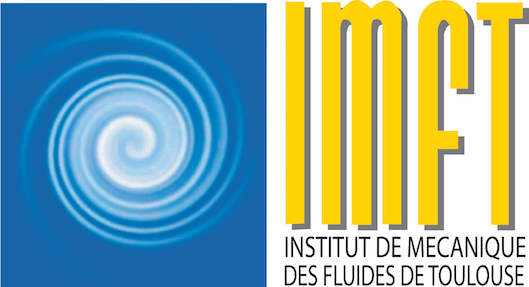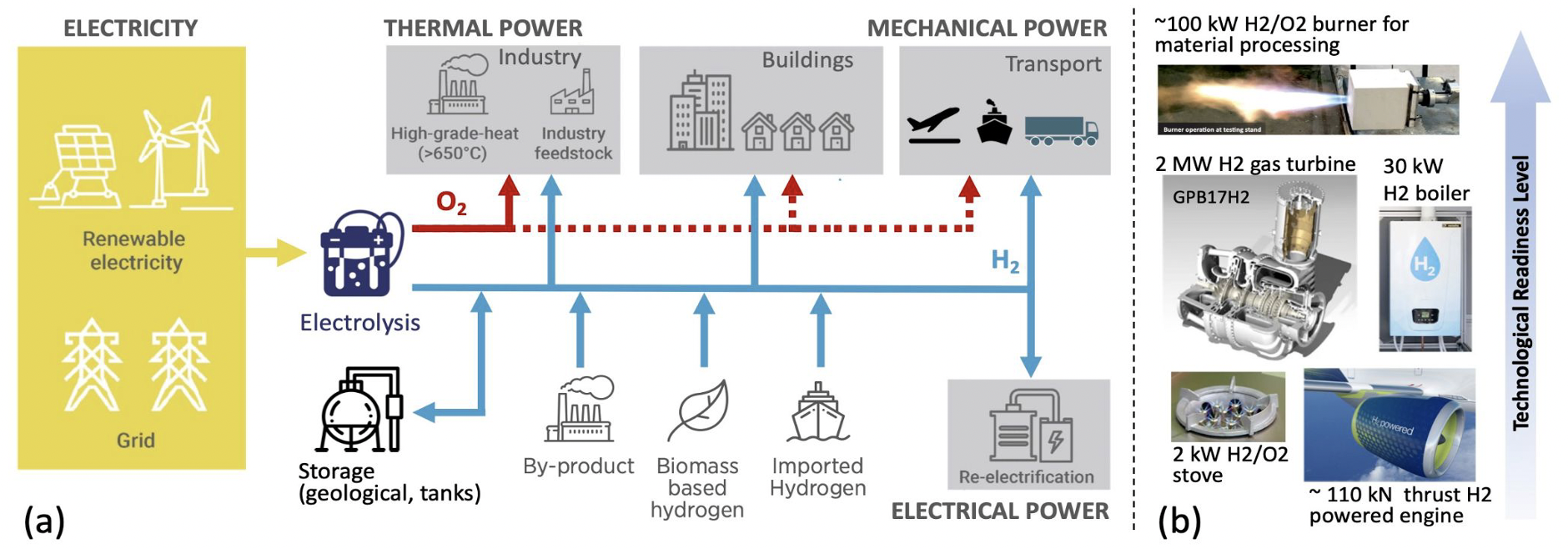



SafE and reliabLE Combustion Technologies powered by Hydrogen

CONTEXT AND OBJECTIVES
Scenarios for the decarbonization of industry, buildings and transport rely on the electrification of industrial processes with low-carbon electricity and on the use of clean or low-carbon hydrogen as an energy carrier and feedstock, for processes and systems that cannot be easily electrified. The EU strongly supports H2 sector development to achieve a climate-neutral economy (EU hydrogen policy) and switch from an economy based on gray hydrogen produced by steam reforming with about 9 kg CO2 released in the atmosphere per kilogram of H2 produced to clean hydrogen or green hydrogen produced by water electrolysis with renewable electricity and net-zero greenhouse-gas emissions (Hydrogen for Net-Zero). The growing demand on H2 will raise substantially the number of processes and systems powered by hydrogen or in which hydrogen is flowing through for its use in EU facilities and transport by 2050 (The Future of Hydrogen). This strategy has deep implications for research in combustion: a H2-based society will require intense combustion research (1) to ensure that H2 systems (production, storage, resilience to failures) are safe and (2) to redesign existing combustion systems for H2. IMFT and CERFACS will combine high-precision experiments with high-fidelity numerical simulations to tackle some of the challenges linked to these two issues. H2 is indeed a very different fuel compared to all fossil fuels and it requires fundamental research to understand the physical mechanisms associated with its combustion and develop new models and simulation tools. SELECT-H will provide a database of canonical cases, which will serve as a reference for the development of industrial devices and safety practices.
First, safety of a H2-based society is a critical issue: as H2 is a small highly reactive molecule, the proliferation of hydrogen fueled systems increases the risk of accidents in the event of leaks. It also raises reliability issues for these technologies in order to avoid violent phenomena that reduce their lifetime and in the worse cases threaten the system integrity (AIAA G-095A-2017,Najjar (2013)). The most dramatic example is the Fukushima nuclear power plant explosion, in which melting of the reactor core released hydrogen inside the reactor containment building that finally led to its explosion and the disaster we all know. For years, nuclear governmental agencies have been conducting R&D programs on the risk of hydrogen explosion, the means to prevent it and limit its consequences. This is an active field of investigation with well identified research teams and dedicated resources (see HyResponse, IRSN). This is why SELECT-H will not address hydrogen detonation, i.e. explosions with high pressure increase across the flame front, but will focus, instead, on other risks associated with hydrogen combustion when it remains in the deflagration regime, i.e. with an almost constant pressure through the reaction front. The dynamics of H2 deflagrations already covers a very wide range of configurations and technologies for which fundamental knowledge is particularly lacking and reliable prediction tools which are validated remain too rare (Najjar (2013), Kavoc (2021)).

Figure 1: (a) Hydrogen production from electrolysis with its by-product O2 and their end uses for electrical, thermal and mechanical power. Adapted from Irena 2018. Dashed-lines are foreseen paths in SELECT-H. (b) Examples of H2 and H2/O2 powered technologies at different technological readiness levels.
Second, the combustion systems used to burn H2 will have to be thoroughly redesigned. The network in blue in Fig. 1a shows how hydrogen can be transported as a pressurized gas or as a cryogenic liquid. This network can be centralized for large infrastructures. For low power units, it can be minimized with electrolyzers directly plugged to the end usage without any storage. In both cases, hydrogen leaks anywhere along the network must be avoided to prevent any possible ignition. Figure 1b shows examples of technologies powered by H2 or H2/O2 currently developed in the EU (see also selected examples ETN Global, Kawasaki Gas Turbine Europe GmbH, Hydrogen boilers). Running tests at steady state operating conditions aim at proper flame stabilization, safe ignition and operation but also at limiting NOx emissions. Recent observations indicate that these new technologies often suffer from pathological phenomena associated with ‘combustion dynamics’ issues, namely undesirable autoignition events, flashback, violent ignition sequences, unacceptable noise levels and thermo-acoustic instabilities (Lieuwen (2021)). These new problems must thus be considered at the design stage and require fundamental research on the individual physical phenomena.
The general objective of SELECT-H is to address H2-related fundamental issues that require significant research breakthrough to develop: (1) the fundamental knowledge on combustion dynamics issues related to the use of hydrogen, possibly coupled with oxygen, in real systems, (2) the physical models and the simulation tools able to predict these flow dynamics issues quantitatively and (3) safe and reliable systems for burning pure hydrogen.
The association of IMFT and CERFACS in SELECT-H is an essential feature of the project because it ensures a direct link between experiments and simulations at two levels:
1/ Within SELECT-H: this experiment/simulation connection is mandatory for success. The objective of SELECT-H is not to ‘only’ understand the flames that will be studied experimentally at IMFT. The true objective is to unveil the physics controlling these hydrogen flames to predict how all other hydrogen flames will behave. This can be achieved only by a systematic comparison of simulations and experimental data as performed by CERFACS and IMFT together in the past (Daviller et al. (2017), Laurent et al. (2019), Laera et al. (2020), Aniello et al. (2022)). In SELECT-H, every experiment performed at IMFT will be accompanied by a corresponding simulation performed with the AVBP solver (AVBP website - CERFACS). AVBP is one of the leading turbulent-combustion codes worldwide, applied in hundreds of contracts, based on 800 man-years of development and already used in multiple ERC grants (Intecocis, Scirocco, Sotuf).
2/ Outside SELECT-H: one of the main outreach products which will allow the community to exploit the outcome of SELECT-H is the simulation codes and models which will be developed and will allow other groups to compute and optimize their own hydrogen systems. This will be achieved by the direct use of the simulation code AVBP which is widely distributed in laboratories (LMFA in Lyon, EM2C in CentraleSupelec, Sherbrooke Univ, T.U. Berlin, T.U. Munich, Univ. Firenze, Univ. Bari, etc.) and companies (AVBP is the production code at SAFRAN AIRCRAFT ENGINE, AIRBUS and SAFRAN HELICOPTER ENGINE). In addition, CERFACS and IMFT will publish the combustion models which will be developed in AVBP and validated with IMFT experiments so that other code developers will be able to use them for their applications: the TFLES model for combustion (Colin et al. (2000), Gicquel et al. (2012)) or the NSCBC technique for boundary conditions (Poinsot and Lele (1992)) developed in AVBP are two examples found today in almost all commercial and open-source codes for combustion. This will guarantee a strong impact.
The progress made in SELECT-H will facilitate the transition from hydrocarbon fueled technologies to safe and reliable pure hydrogen powered industrial processes and engines. To better understand the challenges that are targeted, it is worth listing the three work packages of the project where combustion dynamics will be targeted in SELECT-H, from storage to final end use of hydrogen.
WORK PROGRAM
WP1: Low-power premixed laminar hydrogen flames
Hydrogen will be deployed in cooking stoves, material processing burners, domestic and industrial boilers. When these systems remain small (typically less than 100 kW), fuel and air can be premixed well before combustion to control the flame temperature and NOx emissions by tuning the fuel/air ratio. These burners operating with quasi laminar flows are particularly quiet and have a high turndown ratio to adapt to a wide range of powers. This requires the flame to be well stabilized over a large range of flow conditions. When fueled with natural gas, flames may eventually extinguish (‘blowout’) at high power if the air excess is too large. Replacement by hydrogen almost eliminates this blowout problem, but other problems linked to flame dynamics appear: flashback (WP1-1) and thermo-acoustic instabilities (WP1-2) become increasingly difficult to avoid when the hydrogen content increases, even for operation with large air excess ratio. Thermo-diffusive instabilities also rapidly manifest with lean hydrogen flames and need to be accounted for to understand these atypical dynamic issues.

Figure 2: (a) Burner undergoing flashback due to autoignition inside an optically accessible domestic boiler operating with H2 (IMFT). (b) Ignition dynamics in a turbulent gas turbine model combustor leading to transient reverse flow inside the burner when operated with H2 (Yahou et al. (2022)).
WP1-1: Flashbacki
Flashback corresponds to a violent flow bifurcation from a steady flame stabilized above the burner that suddenly finds a path to protrude inside the injection system and consume all the fuel mixture (Reichel et al. 2015, Vance et al. 2022). This leads to a sudden large overpressure to which the injection device does not generally survive, particularly when hydrogen is used. Flashback issues worsen for cases with oxygen enriched air for the foreseen technologies considered in Fig. 1a. The problem is also compounded by the fact that hydrogen flowing along the hot metallic surfaces of the burner may auto-ignite at locations where it should not burn (Fig. 2a). For hydrocarbon fuel flames, flashback can be avoided by injecting the combustible mixture at high speeds through the injection holes of the burner as proposed in the MICROMIX injection systems already used in certain gas turbines (Funke et al. 2015). This strategy may lead however to unacceptable pressure drops when it comes to burning hydrogen. Recent and unexpected experimental results also indicate that flashback may take place through holes size of the same order of or smaller than the flame thickness (Aniello et al. 2022), a criterion which was considered to efficiently quench usual premixed hydrocarbon fuel flames. This means that the mechanisms leading to flashback are more complex for hydrogen than for standard fuels. The interplay between the near-wall hydrogen combustion chemistry, coupled heat transfer between the wall and the flow and fluid dynamics inside small injection holes through which premixed hydrogen flames flashback remains to be elucidated. Predicting hydrogen-flames flashback is challenging due to the multi-physics interactions that need to be considered over small length scales and fast time scales.
WP1-2: Thermo-acoustic instabilities
High frequency thermo-acoustic instabilities (TAI) were recently identified at IMFT in several low-power laminar devices operated with hydrogen. These instabilities do not threaten the system’s integrity, as flashback would, but lead to unacceptable large tonal noise emissions in the audible band. Many laminar domestic boilers or burners for material processing are already equipped with damping devices to avoid TAI, but these devices are inefficient for hydrogen because the self-sustained oscillations that are triggered with hydrogen take place at high frequencies (above 1 kHz), while all dampers are adapted to the low frequencies (from about ten Hertz to a few hundred Hertz) of the TAI observed in laminar burners powered by hydrocarbon fuels. This means that damping devices will need to be completely redesigned to adapt to hydrogen, but it also shows that the modal coupling to which the flame can feed acoustic energy fundamentally differs with hydrogen. Understanding this high frequency modal coupling and the mechanisms by which premixed laminar hydrogen flames destabilize due to their interactions with acoustic waves is the second objective of WP1. As for flashback, it is suspected that preferential diffusion of hydrogen plays a role in the thermo-acoustic coupling loop as well.
WP2: High power turbulent partially premixed hydrogen flames
At high powers, flashback issues become so critical in premixed systems that a separate injection of the hydrogen and air streams must be preferred to safely produce the thermal power as in gas turbines for propulsion and power generation. The challenge is then to mix air and hydrogen as late and as fast as possible before combustion to avoid a dramatic increase of NOx emissions. Different technological solutions were developed by various groups in Europe. They are currently tested to burn 100% hydrogen (ETN Global). But as technologies progress, new difficulties arise due again to the high reactivity of hydrogen and the specific thermo-diffusive instabilities of lean H2 flames that need carefully be considered because they were not present in most hydrocarbon fuels and require to revisit combustion models (Berger et al. 2022, Song et al. 2022).
WP2-1 Ignition dynamics
Hydrocarbon fuels are difficult to ignite, requiring energy levels higher than 0.2 mJ. Ignition location must also be well selected because the flame kernel needs to survive to avoid flame blowout. The situation is completely reversed with hydrogen. The minimum ignition energy drops to 0.02 mJ for lean hydrogen-air mixtures at ambient conditions. The transient state after an initial flame kernel is ignited up to the final flame stabilization state above a burner becomes extremely fast and violent with hydrogen (Fig. 2b), eventually leading to a high-pressure impulse and a strong flow reversal inside the injector or a large deviation of the flow with respect to the expected final state with a completely different flame topology. The violent pressure pulse may also damage the first stage turbine blades. The ignition dynamics with hydrogen fundamentally differs from hydrocarbon fuel flames (Yahou et al. (2022)) and will be studied in SELECT-H to decipher the main physical mechanisms governing flame propagation inside the combustion chamber and the best strategies to safely ignite hydrogen flames in high power systems.
WP2-2 Flame broadband and tonal noises
The last issue with hydrogen turbulent flames is their broadband noise that substantially differs from the noise radiated by hydrocarbon flames. For a given thermal power, the power spectrum of the radiated noise is not only shifted to higher frequencies: its intensity increases as well. Compared to standard turbulent flames, initial experiments and simulations show that hydrogen reaction fronts are highly corrugated, with many violent and intermittent local flame pinch-off events due to thermo-diffusive instabilities (Datta et al. 2021). This leads to a high intense broadband noise emission at higher frequencies which constitutes by itself another pollutant, and may trigger thermo-acoustic instabilities (i.e. tonal noise) at high frequencies which are typically never observed for hydrocarbon fuels. Injection of oxygen in minute quantities may here be beneficial to improve the overall system stability and reduce the tonal noise in a similar way as for hydrocarbon fueled powered flames with minute injection of hydrogen (Oztarlik et al. 2020). The mechanisms by which hydrogen flames make noise will be investigated in SELECT-H as well as ways to reduce it.

Figure 3: (a) High pressure 9 m long H2 jet flame from a small 5 mm orifice (Adapted from Schefer et al. (2007)). (b) H2 leaks from a joint as a function of flow direction (Adapted from Wang et al. (2022)). (c) Ignition dynamics of flame wall interaction (Adapted from Wang et al. (2021)).
WP3: Jet flames from small gaseous hydrogen leaks
Hydrogen can be stored liquid in cryogenic containers or gaseous in high pressure tanks typically up to 700 bars. The problem of cryogenic hydrogen leaks (see preslhy) is out of the scope of SELECT-H that focuses on gaseous H2. Due to its high diffusivity, hydrogen leaks are common between the place of storage and the place of use in pressurized gaseous networks. Accidental abrupt ruptures from high pressure containers leading to autoignition of the exhausted jet (Fig. 3a) are rare, well identified and relatively well documented hazards (Dryer et al. 2007, Bragin and Molkov 2011). Other leaks take place at the interconnecting components between pipes at the end use system operating pressure (typically below 20 bars). It may for example happen accidentally due to gradual loosening over time of a fitting (Fig. 3b) or deterioration of an O-ring sealing between the supply hydrogen pipe and the power unit (Wang et al. 2012). Other leaks are intentionally provoked in venting devices to avoid overpressures in tanks as those envisaged in future hydrogen fueled aircrafts. In both cases, H2 jets will mix with ambient surrounding air and ignition must be avoided (WP3-1). Difficulties worsen if the ambient air is enriched with O2 in case of a leak on the oxidizer supply line (Fig. 1a). Then, if it ignites anyway, the impact of the resulting flame on the systems walls must be determined (WP3-2).
WP3-1: Ignition of small hydrogen leaks
A flame may ignite if the hydrogen jet leak is flowing close to an electrical spark or a hot solid surface as found at many places in a power unit. The ignition dynamics from small jets released at sonic conditions from pressurized systems are not well understood. Without spark, auto-ignition of hydrogen jets on a hot wall remains also poorly documented and difficult to predict due to the complex interplay between fluid mechanics, heat transfer and hydrogen-air kinetics near a wall.
WP3-2: Hydrogen jet flame interactions with walls
Once the jet is ignited it will heat up all surrounding solid surfaces. It will be extremely difficult to extinguish by blowing air on it in cross-flow, unlike conventional fuel jet flames which can be blown off like a candle (Kalghatgi 2007a-b). Indeed, H2 chemistry is so fast that it resists all perturbations imposed by the flow.
Scenarios in WP3-1 and WP3-2 will be studied in SELECT-H using a new experimental H2 bench at IMFT and the simulation tools of CERFACS to determine and simulate the flame shapes, stabilization characteristics and the heat fluxes they will impose to the system walls. Results will be generic and applicable not only to future aircraft, but also to any hydrogen powered vehicle and more generally to all systems with connections between hydrogen tubes close to electrical devices or hot solid surfaces.
The combustion dynamics problems described in WP1 to WP3 share the same fundamental background. They are all linked to the strong reactivity of hydrogen and to its strong diffusivity. They will be investigated at IMFT by detailed flow characterizations with high repetition rate diagnostics in canonical configurations featuring the main elements of the real systems that are targeted. These experiments are challenging due to the high-speed flows and small length scales of these transient phenomena. Experiments will be systematically designed for and coupled to numerical flow simulations performed with CERFACS high-fidelity simulation codes, to validate the numerical flow models and help unveiling the main physical mechanisms controlling the observed dynamics. This combined approach will leverage the understanding of hydrogen flame dynamics in order to develop (1) the future numerical flow modeling strategy and (2) low order physics-based models that will help to design safer and more reliable hydrogen power units.
References (‘bold’ papers are IMFT/CERFACS work):